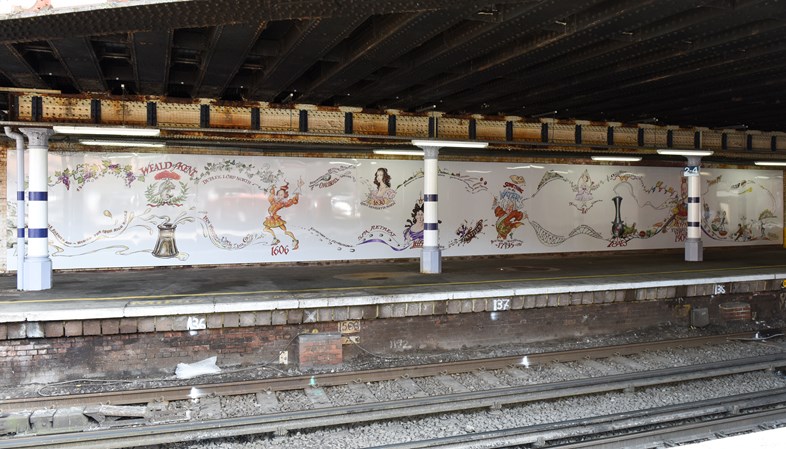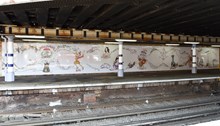The new addition comes after Southeastern put out a call for local artists to create a new "engaging and inspiring piece of work" for the railway station, after the old mural was removed for safety reasons in August 2016.
The train company donated £10,000 to the project which was overseen by the Refresh Tunbridge Wells group, and selected artist Chris Burke to create the new three by 35 metre piece.
Chris was awarded the commission after he demonstrated his plans to involve the local community in the project. He worked closely with local artist Elaine Gill, and film student Samuel Puddick, who has since produced a video of the mural progressing over the last three months.
Passengers will be pleased to know that the much admired old mural won’t be forgotten - the new one has been placed next to a special art piece by Brian Barnes which refers to the original mural he created in 1989.
David Wornham, Passenger Services Director at Southeastern said: “We’re really happy that the mural is now complete and can sit pride of place on Platform Two. We know how much our passengers have missed seeing some artwork at the station, and are really grateful to Chris, Elaine and the team for making this happen. The fact the whole community was involved in the mural makes it even more special.”
Chris Burke, artist, said: “It has been an absolute pleasure to work on this project.
From start to finish, the panel, the artists, designers, historians, photographer and vinyl production team have all been local people with a keen desire to produce something worthwhile for Tunbridge Wells.”
The huge work of art depicts the local history from Iron Age forts built at The Rocks around 200BC, to Tunbridge Wells becoming a spa town in 1606. It includes the period when celebrated dandy and 18th century fashionista Beau Nash became Master of Ceremonies and boosted local tourism. And it also shows how the town became a major draw for royals and aristocrats alike.
Perhaps the most fitting image, the mural shows the start of the railway and the opening of Tunbridge Wells station in the 1840s, and the gaining of the title Royal Tunbridge Wells, which was agreed by Edward V11 in 1909.

